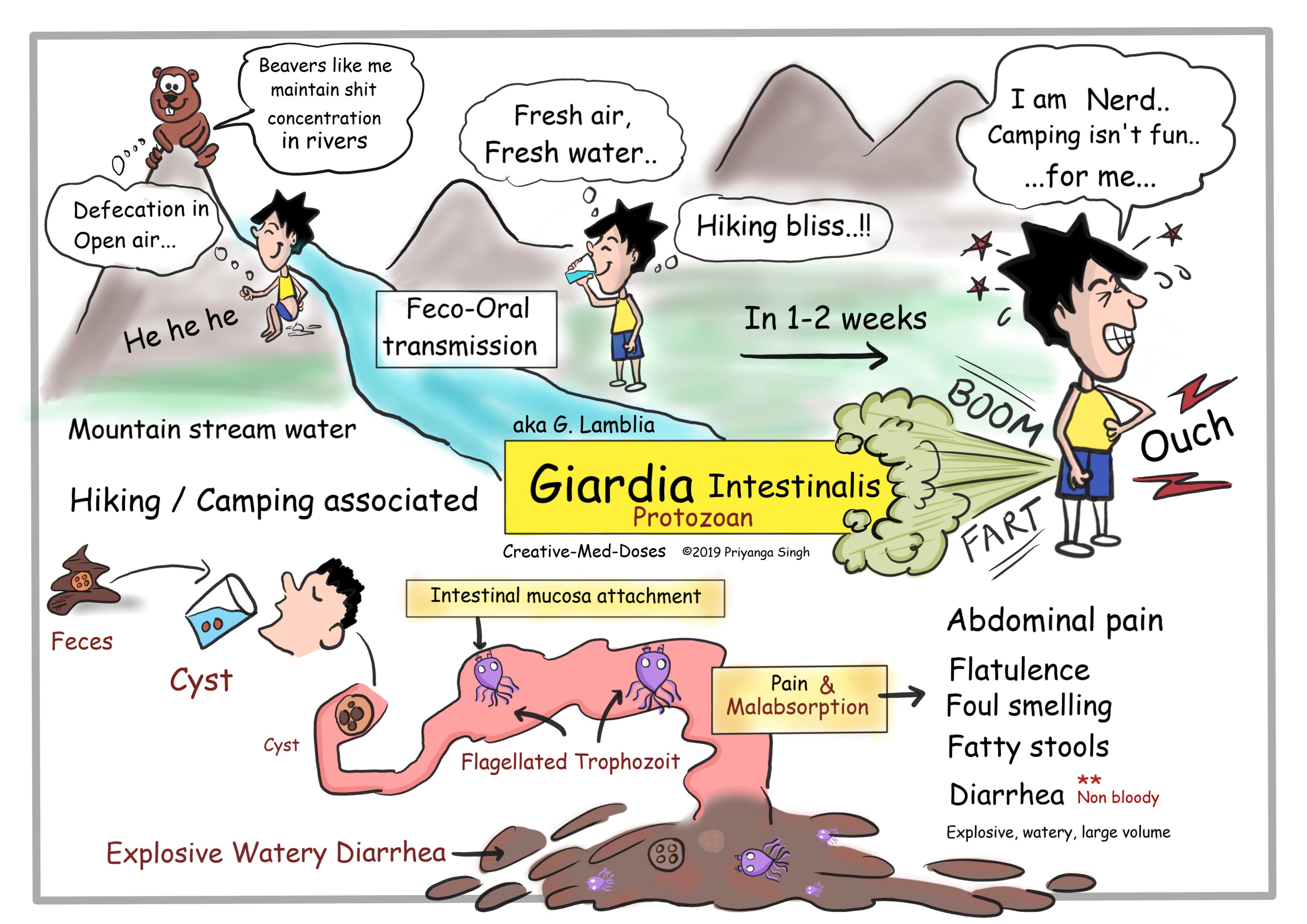Giardia: Explosive Diarrhea for Hikers
Giardia intestinalis aka G. lamblia is a protozoal parasite that inhabits the small intestines of humans and other mammals. Giardiasis is one of the most common parasitic diseases in both developed and developing countries worldwide. It is most common cause of both endemic and epidemic intestinal disease, malabsorption and diarrhea. It is most common cause for diarrhea in hikers because mountain streams are loaded with Beaver’s feces and Beavers are reservoir for giardia.
...

...

...
Pathogenesis
Infection follows the ingestion of cysts present in contaminated water or food, it excyst in the small intestine, releasing flagellated trophozoites. Trophozoites can remain free in the lumen or attach to the mucosal epithelium by means of a ventral sucking disk. Although trophozoites adhere to the epithelium, they are not invasive. Trophozoites induce apoptosis of enterocytes, epithelial barrier dysfunction, and epithelial cell malabsorption and secretion which leads to lactose intolerance. In severe cases loss of brush-border enzyme activities can lead to significant malabsorption. Patients with hypogammaglobulinemia (Ig A deficiency) suffer from prolonged, severe infections and are poorly responsive to treatment.
Clinical manifestation
Acute Giardiasis
- Most cases present 1-2 weeks after exposure
- Abdominal pain and bloating
- Flatulence
- Foul smelling, large-volume, watery, fatty diarrhea
- Non bloody diarrhea
Chronic Giardiasis
In such cases giardia causes malabsorption and failure to thrive. Children present with weight loss, developmental delay and Growth retardation.
Diagnosis
Stool test microscopy
Cyst and trophozoites are seen, trophozoites typically have “smiley face/ looking back at you” look on microscopy. Trophozoites are pear-shaped, dorsally convex, flattened parasites with two nuclei and four pairs of flagella.
Stool antigen test
Giardiasis is diagnosed by detection of parasite antigens in the feces by ELISA or RIA.
String test
It involves swallowing a string with gelatin capsule to obtain a sample from the upper part of the small intestine. The sample such as bile, blood, or mucus attached to the string is examined under the microscope as a wet preparation for the presence of intestinal parasites (cyst and trophozoites of giardia).
Treatment
- Metronidazole
- Paromomycin for pregnant ladies.
Prevention
Giardiasis can be prevented by consumption of uncontaminated food and water and by personal hygiene during the provision of care for infected children. Boiling or filtering potentially contaminated water reduces chances of infection.
Case scenario
...

...
A 20-year-old woman returns from hiking trip and presents to emergency room with abdominal cramps, watery diarrhea and dehydration. She reports foul smelling greasy stools and flatulence. Stool sample microscopy shows cysts and multinucleated flagellated trophozoites. Which of the treatment option is most appropriate?
- Ampicillin
- Ciprofloxacin
- Metronidazole
- Vancomycin
Further learning https://www.youtube.com/watch?v=-EGTyu8nD34
Revision for today https://creativemeddoses.com/topics-list/alport-syndrome-type-iv-collagen-defect/